|
|
Updated as per http://biological-diversity.info/sphingidae.htm (Belize), November 2007
Updated as per Fauna Entomologica De Nicarauga, November 2007
Updated as per The Known Sphingidae of Costa Rica, November 2007
Updated as per Sphingidae (Lepidoptera) de Venezuela, Compilado por: María Esperanza Chacín; December 2009
Updated as per personal communication with Jean Carlos Garcia (Las Chimalpas, Oaxaca, Mexico, August 22, 2010); April 11, 2014
Updated as per personal communication with Sergio D. Ríos Díaz in CATÁLOGO DE LOS SPHINGIDAE (INSECTA: LEPIDOPTERA) DEPOSITADOS EN
EL MUSEO NACIONAL DE HISTORIA NATURAL DEL PARAGUAY; sent to me in July 2014 by Sergio D. Ríos Díaz.
|
Callionima falcifera
Vernon A. Brou has indicated images depicted are not
true falcifera. See the discussion on
Callionima parce page. I have moved some images and now believe that all images on this page are
C. falcifera, based on information from CATE and personal communication with Jean Haxaire.
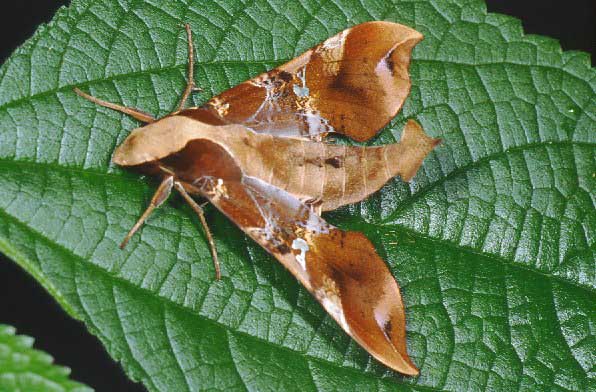
Callionima falcifera from Rancho Grande, H. Pittier
National Park, Venezuela by Paolo Mazzei.
This site has been created by
Bill Oehlke at oehlkew@islandtelecom.com
Comments, suggestions and/or additional information are welcomed by Bill.
TAXONOMY:
Family: Sphingidae, Latreille, 1802
Subfamily: Macroglossinae, Harris, 1839
Tribe: Dilophonotini, Burmeister, 1878
Genus: Callionima Lucas, 1857 ...........
Species: falcifera Gehlen, 1943
|
MIDI MUSIC
.....It's a Wonderful World.....
copyright C. Odenkirk
ON.OFF
<bgsound src="world.mid" LOOP=FOREVER>
|
DISTRIBUTION:
Callionima falcifera
(wingspan 68-73 mm) flies in
Mexico;
Belize: Corozol, Orange Walk, Cayo, Toledo;
Nicaragua: Madriz, Jinotega,
Matagalpa, Chinandega, Managua, Masaya, Granada, Isla de Ometepe, Rio San Juan;
Costa Rica: Puntarenas, Guanacaste,
Alajuela, Lemon, San Jose, Heredia;
Jamaica (ssp elainae),
etc., south through northern South America (northwestern and eastern Venezuela: Aragua, Barinas, Bolivar, Carabobo, Falcon, Portuguesa,
Trujill, Zulia), possibly to Paraguay: Concepcion; Amambay.
Hemeroplanes elainae Neidhoefer, 1966, Jamaica, is a synonym
for Callionima falcifera
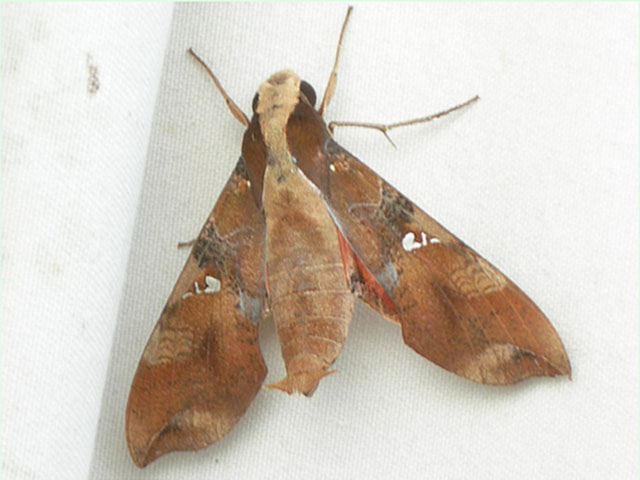 "Forewing apex acutely pointed, falcate (although the degree is variable).
"Forewing apex acutely pointed, falcate (although the degree is variable).
"Forewing upperside extremely similar to Callionima parce; consistently differing only in the pale oblique apical line
expanding at M1 into a pale patch that does not curve back up the outer edge of the apical line towards the apex but is
directed posteriorly towards the outer margin, resulting in the area between the outer margin and the apical line being the
same colour as the area immediately basal to the apical line." CATE
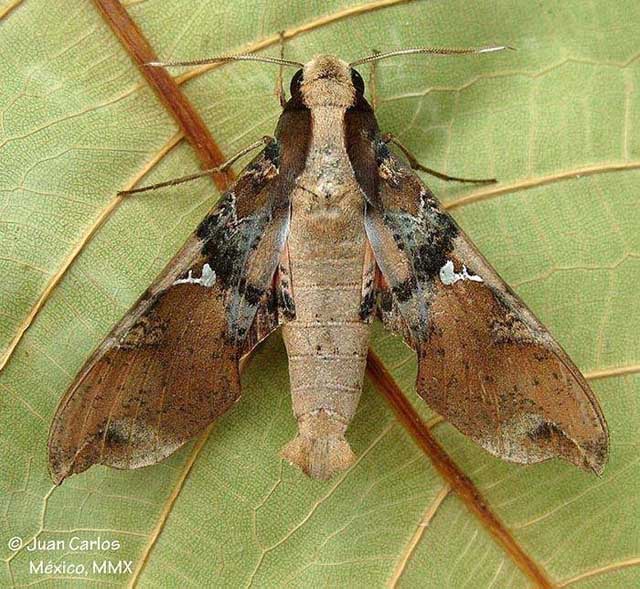
Callionima falcifera, Las Chimalpas, Oaxaca, Mexico,
August 22, 2010, courtesy of Juan Carlos Garcia
FLIGHT TIMES:
Callionima falcifera adults fly continuously and specimens have been taken
in every month in Costa Rica.
This species is redder, has more falcate wings and flies after
midnight. The very similar Callionima parce is browner,
slightly less falcate and flies before midnight.
ECLOSION:
Adults eclose from pupae formed in flimsy cocoons among leaf litter.
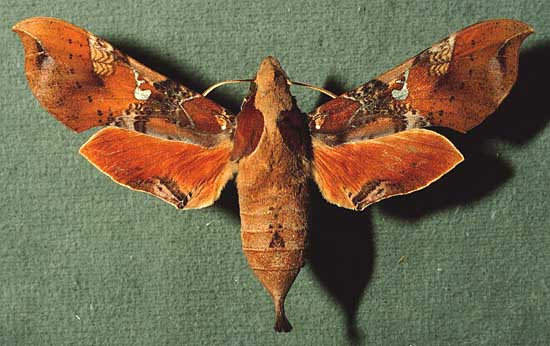
Callionima falcifera female courtesy of Dan Janzen.
SCENTING AND MATING:
Females call in the males with a pheromone released from a gland at the tip of the
abdomen. Both males and females come in to lights, but males are taken much more frequently that way.
EGGS, LARVAE, PUPAE:
Larvae feed on
Stemmadenia obovata and probably on other members of the Apocynaceae family.
Huevos de caballo, cojones de burro, cojón, cojón de puerco, and cojón de coche (Guatemala), are the common
names for Stemmadenia obovata.
In English, the common name is "Horse Testicles". This tree has a smooth, pale whitish bark with
prominent lenticils.
The leaves are simple and glossy. The fruit is green and is paired (resembling its common name "horse testicles"). |
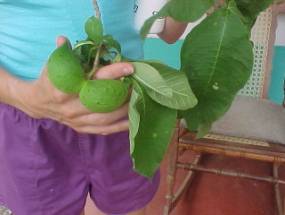 |
The narrow, flattened head of the larva is clearly visible in the lateral and dorsal views below.


Larvae are frequently parasitized by Drino piceiventris, one of the Tachinidae.
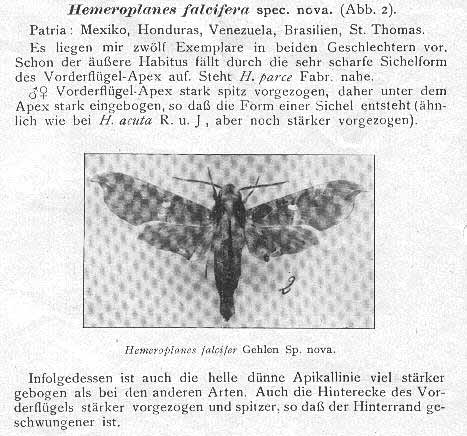
Note the very hooked forewing tips on original Callionima falcifera
.
Below is the image Dr. Manuel Balcazar Lara gives from Mexico.
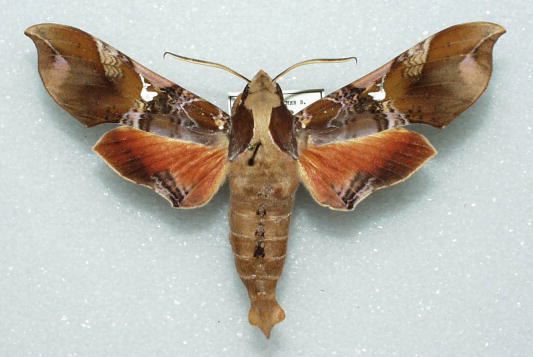
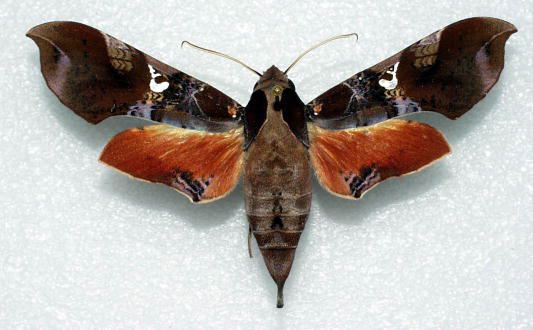
Callionima falcifera, female, courtesy of Manuel Balcazar-Lara
identified by Jean Haxaire.
Return to Sphingidae Index
Return to Dilophonotini Tribe









